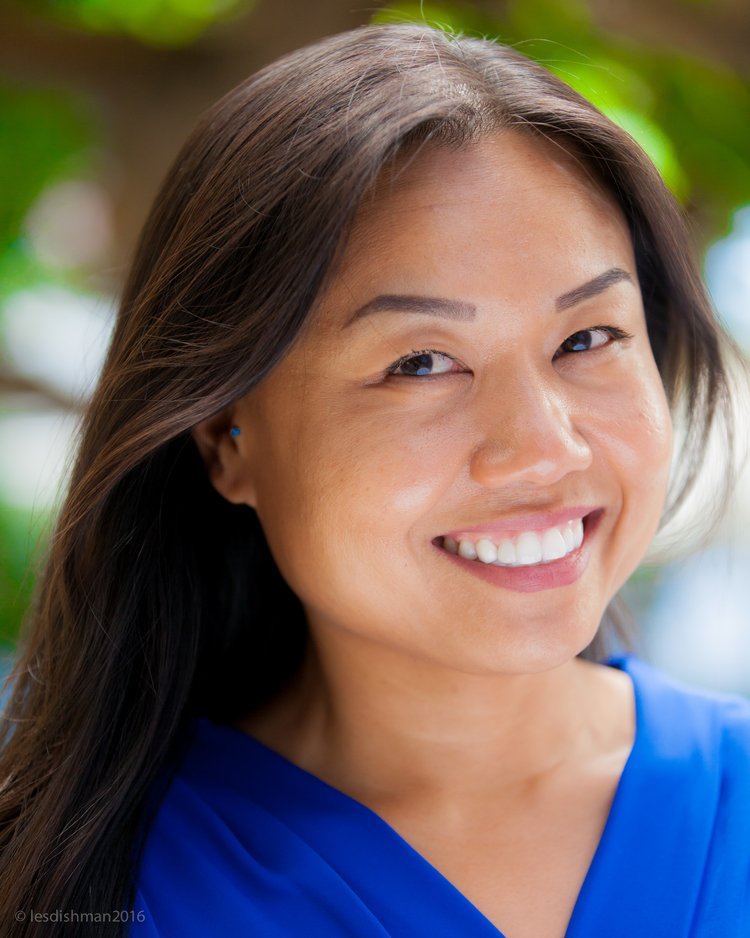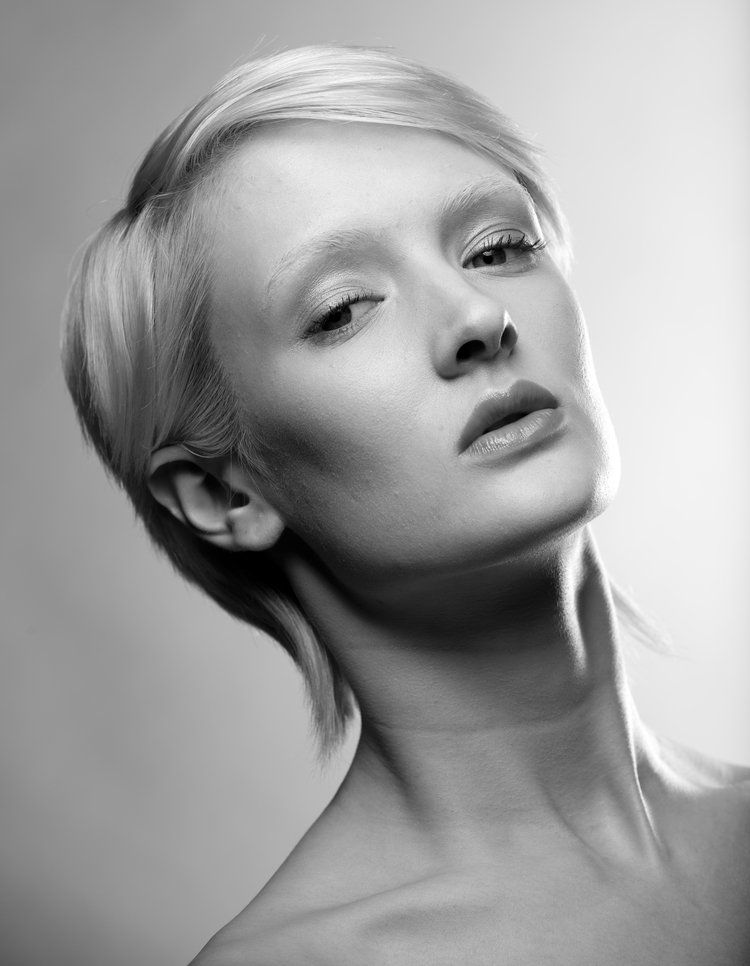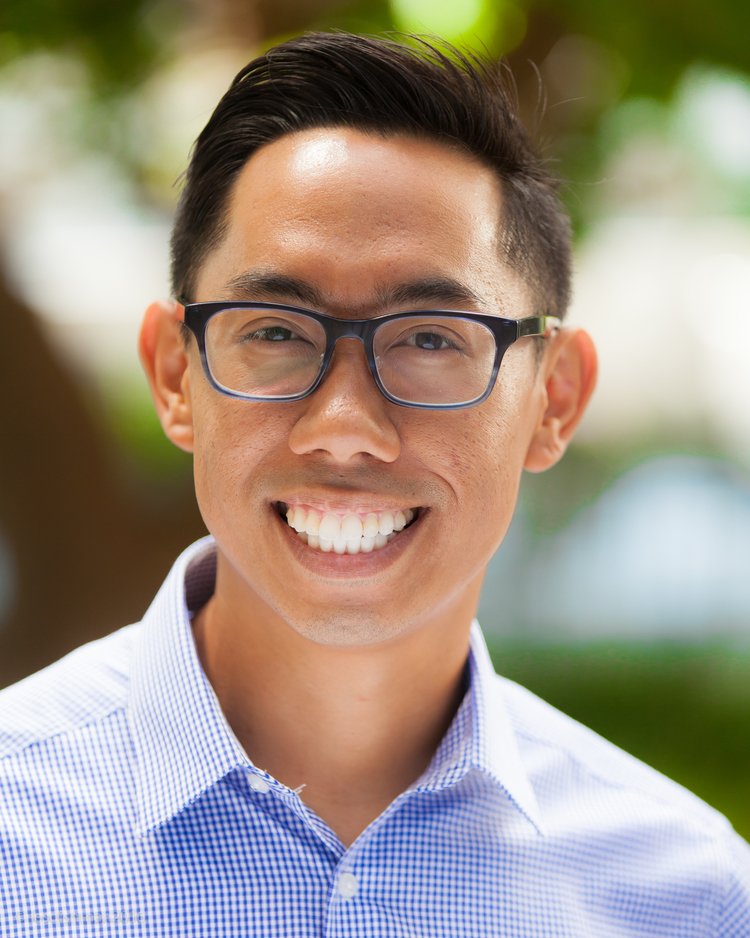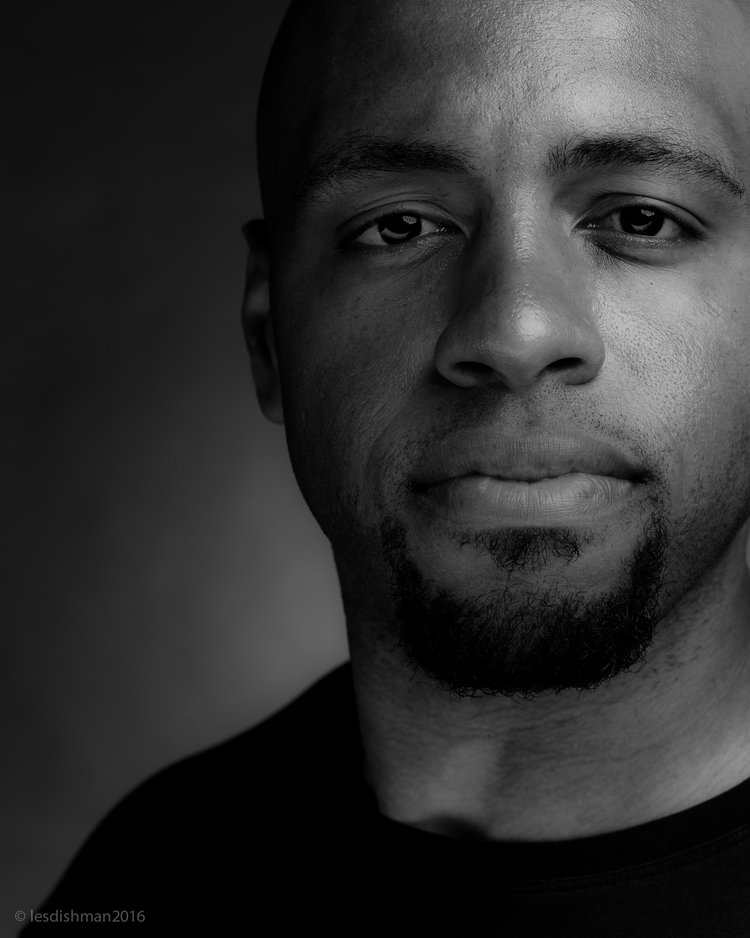WARNING: This blog post is solely about gear and, as a result, has very little socially redeeming value.
Life as a corporate headshot photographer means that I regularly go to different offices and workplaces that contain a variety of settings, lighting, different sized rooms (sometimes little to no room at all), and often a compressed schedule that can vary considerably from what was discussed during the pre-shoot meeting with the client. Because of this, on-location photographers often think of themselves as problem solvers as much as photographers.
Aside from the mechanics of posing, lighting, shooting, and workflow, one of the first problems that an on-location corporate headshot photographer must solve is how to build a kit that allows them to take – and deliver – consistently high quality headshots, person to person, shoot to shoot in all of those differing locations. Factors to consider include when building a portable kit redundancy, usability, durability, quality, and efficiency. Redundancy in key pieces of equipment (such as cameras, lenses, and lights) is important since Murphy’s Law is always a factor on location. Two cameras, two sets of cards, at least two lenses, and multiple lights are the minimum for professionals because of the ‘just in case’ factor. Grip equipment (stands, lights, clamps, etc) must be in good working order and must stand up to the rigors of daily use. Efficiency is important because no one (especially the client) wants to watch their photographer take two hours to set up (and another two hours to tear down) equipment for a 15 minute photoshoot.
Kit build out varies from person to person, but here’s what my on-location, corporate headshot portrait kit currently consists of.
Cameras: Canon 5D Mark IV , Canon 5D Mark II, (or … in a pinch … FUJIFILM XT-3)
The Canon 5D Mark II and IV are two full frame digital single-lens-relfex (DSLR) cameras that are very nearly purpose-built for headshot photo sessions. These cameras offer beautiful color straight out of the camera and a raw file (think digital negative) that provide a wide latitude for post processing. As I just mentioned, both are full frame cameras (the Mark II comes with a 21.1mp sensor while the Mark IV comes with a 30.4mp sensor) and provide more than enough room to crop in tight for whatever need your headshot is used for.
Despite being released in 2008, the 5D Mark II is still a perfectly good camera to use for headshot photography. I defy anyone to tell the difference between headshots taken with the Mark II, Mark IV, or even one of the absolute latest Canon, Nikon, or Sony full frame mirrorless cameras.
I also have two Canon 1N 35mm film cameras in the off chance that a client (or me) wants an authentic film look to a shoot (as opposed to recreating those looks digitally). Canon 1Ns are workhorse, professional-grade 35mm film cameras that are mechanically superior machines and that can be had for a couple of hundred dollars or less. The final beauty of this camera is that it has the same mount as my 5DMark II and IV, so it easily accepts the same modern lenses I use with those cameras!
The Fuji XT-3 is a highly capable camera for headshot portraits, offering exceptional image quality and versatility in a compact and lightweight body. With a 26.1-megapixel APS-C sensor and advanced autofocus system, it can capture sharp and detailed images with beautiful skin tones and rich colors.
PRIMARY Lens: Canon 70-200mm F2.8 & fujifilm 35mm f1.4
Another workhorse from the Canon family, the 70-200mm F2.8 offers outstanding edge-to-edge sharpness, both wide open and stopped down. It also does a great job of fending off chromatic aberration and flare while producing stunningly contrasty images time and time again. It’s relatively narrow field of regard allows the photographer to isolate his subject so that potentially distracting elements are minimized. Near zero distortion means that the lens perfectly frames the human face in the most flattering way.
The 70-200mm F2.8 is my “go to” lens for headshot portraits.
The Fujifilm 35mm F1.4 is a prime lens designed for Fujifilm X-series mirrorless cameras. With a focal length equivalent to 53mm in full-frame, it's a versatile lens suitable for a wide range of photography genres, including portraits, street photography, and landscapes. The fast maximum aperture of F1.4 makes it excellent for low-light shooting, creating a beautiful shallow depth-of-field and bokeh. The lens features an all-metal construction and advanced optical design with aspherical and ED elements that minimize distortion and aberrations while producing sharp and contrasty images. Overall, the Fujifilm 35mm F1.4 is a highly regarded and popular lens among Fujifilm X-series photographers.
Backup Lens: Canon 85mm F1.8 (or 50mm F1.2)
Sharp. Lightweight. Responsive. These are just a few adjectives that describe this terrific portrait-length telephoto lens.
The 85mm F1.8 is a medium telephoto lens while the 50mm F1.2 is a so-called “normal lens” (the lens that, on a full frame DSLR most closely matches our eyes’ field of view). Both have large apertures, excellent corner to corner sharpness, and both have the ability to separate the subject from the background in order to create more foreground visual interest. Both lenses are primes – which means they do not zoom. That also better optics and significantly sharper images than zoom other zoom lenses in its price range.
These are primarily a backup lens and are really only used when I don’t have the room between me and the subject that is required to use the 70-200mm F2.8 described above.
Lights: Godox AD200, GODOX AB600M,
These lights gives me studio quality light and power in a small form, battery-operated factor. I use three (sometimes four) of these on most shoots. Three will light the subject while one will light the background if requested/needed. They are very efficient and will give me power all day should the need arise.
GODOX XPRO trigger
The Godox XPro trigger is an excellent choice for Godox lights as it offers reliable wireless communication and control over the lighting setup. This trigger allows the photographer to separate multiple lights into groups and channels, to vary the lighting mode that each light will use, and to increase and decrease the light’s output in 1/3 stops - all from the camera and without going to each light individually. With its large display, intuitive controls, and compatibility with various camera brands, the XPro trigger makes it easy to adjust settings and achieve the desired lighting effects.
I have three of these triggers; two for my Canon cameras and one for my Fuji camera.
Light Modifier: PhoTtix Raja 105 Softbox and Stripbox
When you see these light modifiers on set for the first time, you might believe that they are overkill for headshot photographs. That’s not the case however. Larger light sources (relative to the subject) make for softer, more flattering light, so you’ll see headshot photographers get these lights as close to the subject as they can. They provide soft, even lighting that “wraps around” the face and all of its contours and gives gradual, soft fall off that shapes the face wonderfully.
Best of all, these softboxes are umbrella-style meaning that they set up and tear down in seconds.
FJ Westcott eyelighter (or … 5-in-1 reflector)
The FJ Westcott Eyelighter is an essential piece of equipment for headshot photographers who want to create unique catchlights in their subjects' eyes. The reflective panel illuminates the eyes and provides a distinctive, curved catchlight that adds depth and dimension to the portrait, resulting in a more compelling and visually interesting image.
Alternatively … I can also bring a round five- in-one reflector to fulfill the same purpose as the Eyelighter, A 5-in-1 reflector is easier to set up and tear down, is cheaper, and is more flexible in that it can reflect gold, silver, or white light onto a subject’s face. It can also act as a flag to block light as well as a scrim to diffuse light when space is so tight that a softbox won’t fit. The only downside is that the resulting catchlight is round - not nearly as unique as the catchlight from the Eyelighter.
Both do an excellent job of bouncing natural or artificial light onto the subject, filling in shadows and creating catchlights that add depth and dimension to the portrait, resulting in a more compelling and visually interesting image.
Backdrop: FJ WestcoTt X-Drop Pro
This backdrop system is quick and easy to set up and tear down. The panels create a smooth and seamless look for professional photos, reflection-free and machine-washable. The stand itself is made with lightweight aluminum, is adjustable for narrow spaces and collapses for easy travel. The combinations of black, middle-grey, and white are appropriate for easily 75% of the corporate headshot work that I do.
Sekonic L-358 Flash Master Light Meter
Light meters measure the amount of light falling on a subject (incident light), or being reflected by a subject (reflective light). By converting these measurements, it defines what would be the most beneficial shutter speed and f/stop to use for that given subject.
Light meters are particularly helpful where subject matter / lighting conditions are difficult or where lighting consistently from subject to subject is important.
All modern digital cameras made in the last decade (or more) certainly have really effective internal light meters. There are limitations to those internal meters and the readings they return, which is why many professionals still prefer to meter their lights separately (i.e., one at a time) to ensure they’re getting the exact light ratios they want instead of “close enough.”
Laptop & Accessories
Shooting tethered refers to the process of connecting a camera to a computer or other device via a cable, allowing for real-time image transfer and remote control of the camera settings. This allows photographers to review and adjust their images as they are being taken, often for studio or commercial shoots.Shooting tethered is a great way to provide instant feedback to clients during a shoot. Generally this is only done in studio or in the corporate setting (as opposed to outside or on location - although you can shoot tethered anywhere you can bring a laptop.)
GRIP GEAR: Manfrotto Light Stand
A leading name in photography and videography grip equipment for decades, this light stand does exactly what it is supposed to do. It is solid, holds the light and softbox easily, and sets up and tears down in seconds.
I use three of these.
ADDITIONAL GRIP GEAR: Matthews C-Stand
This stand is a heavier duty piece of grip gear than the Manfrotto light stands described above. The articulating arm shown on the stand at the right allows for the modifier and light to be set up higher and at different angles depending upon the direction of light that is needed. It will also allow for positioning the light immediately above (and looking down upon) the subject which allows for a hair (rim) light that separates dark colored clothing and hair from a dark background.
This stand is a necessity when headshots are being taken against a black background.
There are numerous other pieces of equipment that I’ll bring to a shoot that are not listed here. Other equipment includes memory cards, batteries, apple boxes (something to stand on), power strips, reflectors, grey cards (useful for setting an exact white balance across all photos taken during a shoot), and colored gels (if requested by the client).
Hopefully by now you see that headshot photography entails a bit more than simply pointing an iPhone at someone’s face and taking a photograph. On-location equipment must be portable but professional, easy to set up and tear down, but durable enough to last.
Thank you for taking the time to read this article! I hope it has provided some useful insight and information as you consider your corporate headshot photography needs. I understand the importance of professional headshots for businesses and individuals alike and stand ready to help you get high quality, impactful headshots for all of your corporate staff..
As a veteran-owned small business (USAF, 22+ years), I take pride in providing top-notch service to my clients. I am available 24/7 to cater to your headshot and event photography needs. If you're looking for high-quality headshots to represent your company or personal brand, please consider Les Dishman Photography for the task. My expertise, attention to detail, pricing, and commitment to customer satisfaction makes me a perfect choice for your photography needs.
To learn more about my services or to schedule a session, please call me at 310-614-5119 or email me at les@lesdishman.com. I look forward to hearing from you and helping you invigorate and elevate your corporate and/or personal brands!




